How to Change the Ringtone on iPhone
For Everyone
Your iPhone is set to the default ringtone out of the box. But because so many people use iPhones without bothering to change their ringtone, you end up reacting when someone's phone rings. Having different ringtones is a good auditory signal, making it easier to tell when your phone is ringing, and whether you just don't like the default ringtone. These are the steps involved in changing the ringtone on your iPhone for every incoming call:
- Go to the Settings app.
- Click sound and touch.

- Choose a ringtone.

- #Select the new tone you want to use from the list.

That's it! This will change your default ringtone.
For selected contacts
This is an underutilized feature on smartphones. On almost all modern smartphones, including iPhones, you can select a different ringtone to play for specific contacts when they call you. This is useful for distinguishing calls from your partner, your boss, or someone you've listed as an emergency contact but doesn't call you regularly. Hearing different ringtones makes it easier to identify who is calling without having to look at the phone. Here are the steps to set a different ringtone for specific personal contacts:
- Launch the Phone app.
- Go to the Contacts tab.

- Click on the contact you want to set a unique ringtone for and then tap the Edit button in the upper right corner.

- Scroll down and click on the ringtone.

- Select the ringtone you want to set from the ringtone list. This will only change the ringtone for this specific contact.

That's it. You have to change the ringtone for each contact you want a separate ringtone for.
How to set a custom ringtone on iPhone
The steps above are used to choose from a handful of ringtones that Apple preinstalls on every iPhone. What if you want to set your own audio as a ringtone? Here are the steps!
Using GarageBand
GarageBand is an application that comes preinstalled on new iPhones, iPads, and Macs. If you've deleted it, you can download it for free from the App Store, so this part is still accessible.
- Launch the GarageBand app on your iPhone.
- Click the plus sign ( ) icon in the upper right corner.

- Select "Recorder" in the "Tracks" tab.

- Click the third icon in the upper left corner of the screen as shown in the screenshot below.

- Click the "Loop" icon in the upper right corner.

- Select the File tab.

- # Select the Browse item from the Files app.

- Click on the track you have downloaded and wish to set as your ringtone.
- This will import the track into the Files section of the Loop.

- Drag the imported file to the left side of the screen and release.

- Click the button in the upper left corner.

- Choose my song.

- Rename the project - if you wish.

- Click and hold the item and select Share.

- Select the ringtone in the middle of the screen.

- Click Export in the upper right corner.

- Look! You'll now find it in the "Sounds & Haptics" section of the Settings app - where you can set it as your iPhone's ringtone.
Using iTunes
If the audio file is on your Mac or Windows PC, you can use Finder or iTunes respectively to transfer it. However, if you have the former, it's easier and faster to use AirDrop instead. Once the track is in your iPhone's Files app, you can simply follow the steps above to set it as a ringtone through GarageBand. Alternatively, you can follow these steps:
- Connect your iPhone to your Mac or PC using a cable.
- Open Finder on Mac or the latest version of iTunes on Windows.
- Click on the Library tab in the Music section.
- Select Tone under Devices in the sidebar.

- Drag and drop audio files into the empty tone list.
- This will add the audio file to the list of ringtones available on your iPhone.
- To set it as a ringtone, follow the steps we listed at the beginning of the tutorial.
The above is the detailed content of How to set a ringtone on your iPhone using GarageBand and iTunes. For more information, please follow other related articles on the PHP Chinese website!
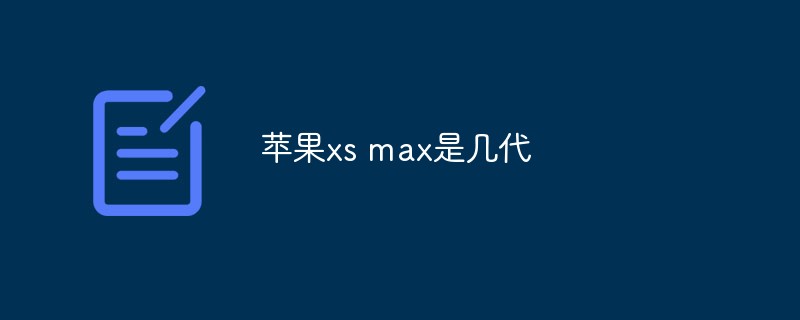 苹果xs max是几代Nov 03, 2022 pm 04:58 PM
苹果xs max是几代Nov 03, 2022 pm 04:58 PM苹果xs max是苹果第十二代。“X”是罗马数字中的10,“X”代表苹果向iPhone问世十周年的致敬;2017年9月13日,iPhone X正式发布,该产品为苹果第十一代产品;iPhone XS Max是2018年9月13日发布的,为第十二代苹果手机。
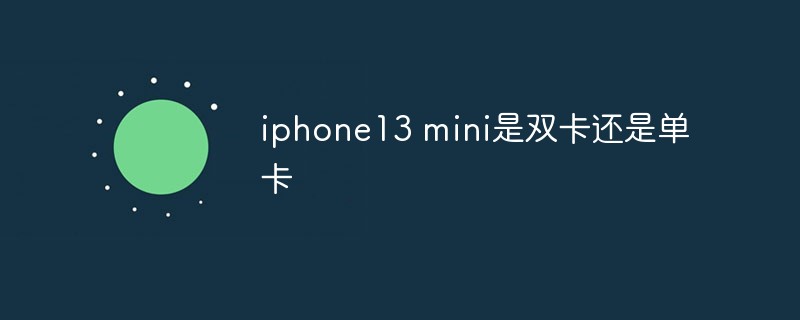 iphone13 mini是双卡还是单卡Nov 22, 2022 pm 05:27 PM
iphone13 mini是双卡还是单卡Nov 22, 2022 pm 05:27 PMiphone13 mini是单卡。iphone13 mini是苹果公司于2021年9月15日发布的一款智能手机,其SIM卡片类型为nano-SIM卡,并不兼容现有的micro-SIM卡,因此不支持双卡模式;该机为5G(sub-6 GHz)全网通手机(支持中国联通、中国移动和中国电信),支持GSM/EDGE、UMTS/HSPA+、DC-HSDPA网络。
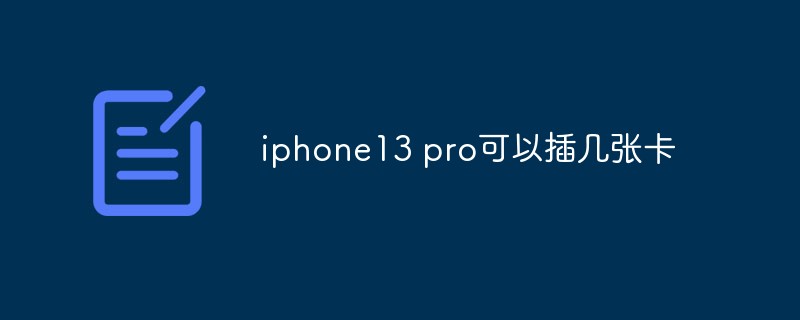 iphone13 pro可以插几张卡Nov 28, 2022 pm 05:56 PM
iphone13 pro可以插几张卡Nov 28, 2022 pm 05:56 PMiphone13 pro可以插2张卡。iPhone13 Pro是苹果公司于北京时间2021年9月15日发布的智能手机,支持双卡双待,支持双卡nano-SIM卡,但不兼容现有的micro-SIM卡;应用双卡要求运用两项移动通信服务,不支持同一时刻使用两项CDMA移动通信服务,且仅部分运营商支持双VoLTE。
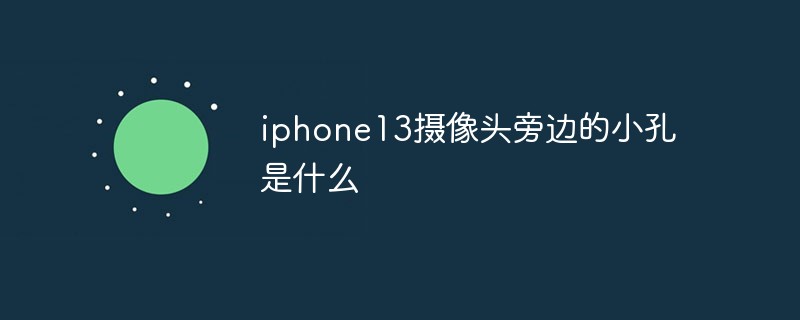 iphone13摄像头旁边的小孔是什么Nov 07, 2022 pm 02:52 PM
iphone13摄像头旁边的小孔是什么Nov 07, 2022 pm 02:52 PMiphone13摄像头旁边的小孔是麦克风,采用双唛降噪设计,是辅助副送话器收音用的,可以用来降低环境噪音和提升通话语音的清晰度的。由于在拍摄视频的时候会由于环境噪音导致被摄主体的收音效果不佳,目前大部分的智能手机都会在机身上设置有多个降噪麦克风,用来录制周围环境的噪音,结合降噪算法,实现降噪效果。
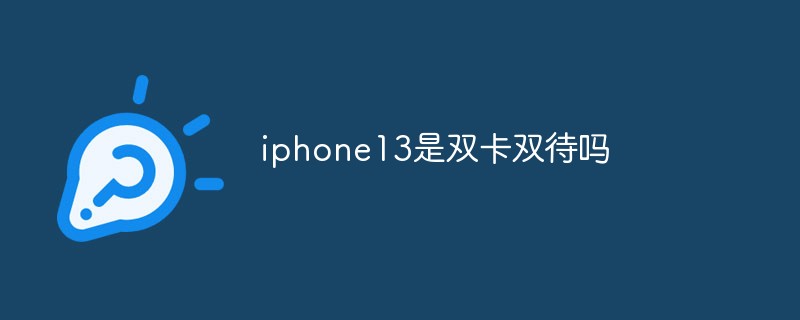 iphone13是双卡双待吗Aug 11, 2022 pm 03:52 PM
iphone13是双卡双待吗Aug 11, 2022 pm 03:52 PMiphone13是双卡双待,iphone13系列中只有“iPhone 13 mini”不是双卡双待;苹果iPhone13支持双卡双待,双卡类型为“nano-SIM”,不支持现有的“micro-SIM”卡,需要正反两面安装SIM卡,一共可以安装两张“12mm*9mm nano-SIM”卡。
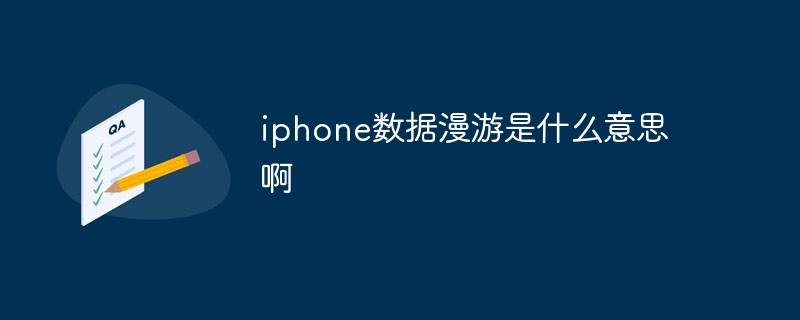 iphone数据漫游是什么意思啊Dec 02, 2022 am 10:52 AM
iphone数据漫游是什么意思啊Dec 02, 2022 am 10:52 AMiphone数据漫游是指iPhone蜂窝网络下的“数据漫游”功能,而数据漫游就是跨运营商的漫游;在国内,该功能无论是打开或者关闭,都是没有任何作用的,因为它只是针对国际上不同的移动运营商起作用。
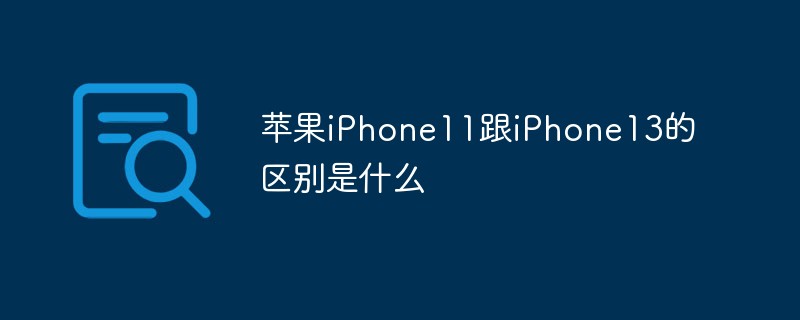 苹果iPhone11跟iPhone13的区别是什么Oct 25, 2022 am 10:35 AM
苹果iPhone11跟iPhone13的区别是什么Oct 25, 2022 am 10:35 AM区别:1、苹果11采用A13仿生处理芯片,具有4核图形处理器和8核神经网络引擎;而13采用采用A15仿生处理芯片,具有4核图形处理器和16核神经网络引擎。2、苹果11屏幕尺寸为6.1英寸Liquid 视网膜高清显示屏;而苹果13屏幕尺寸为6.1英寸超视网膜XDR显示屏。3、苹果11的屏幕对比度为1400:1对比度,而苹果13的屏幕对比度为2000000:1对比度。
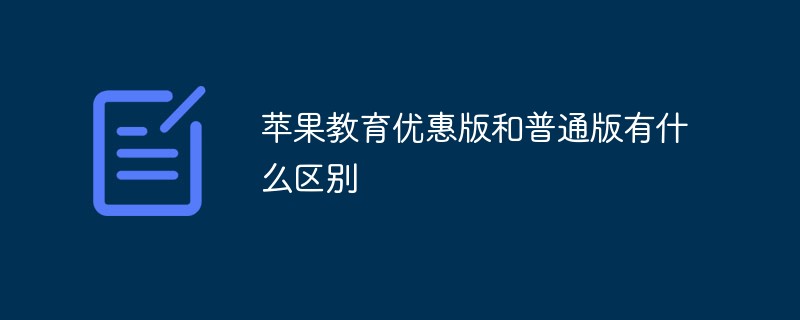 苹果教育优惠版和普通版有什么区别Oct 19, 2022 am 09:17 AM
苹果教育优惠版和普通版有什么区别Oct 19, 2022 am 09:17 AM区别:1、教育优惠比官网标价(普通版)要便宜。2、教育优惠官网下单速度会比普通版慢,普通版有货的状态一般是1-3个工作日就发货了,教育优惠版比较快的也是几天时间,如果是遇到了开学前大量学生购买的高峰期,可能要排队几个星期。3、教育优惠适用人群为准大学生、大学生、教职工(包括大中小学以及特殊教育学校的教职工群体);而普通版的适用人群比较广。

Hot AI Tools

Undresser.AI Undress
AI-powered app for creating realistic nude photos

AI Clothes Remover
Online AI tool for removing clothes from photos.

Undress AI Tool
Undress images for free

Clothoff.io
AI clothes remover

AI Hentai Generator
Generate AI Hentai for free.

Hot Article

Hot Tools

SAP NetWeaver Server Adapter for Eclipse
Integrate Eclipse with SAP NetWeaver application server.

Dreamweaver Mac version
Visual web development tools

ZendStudio 13.5.1 Mac
Powerful PHP integrated development environment

Atom editor mac version download
The most popular open source editor

SublimeText3 Linux new version
SublimeText3 Linux latest version







